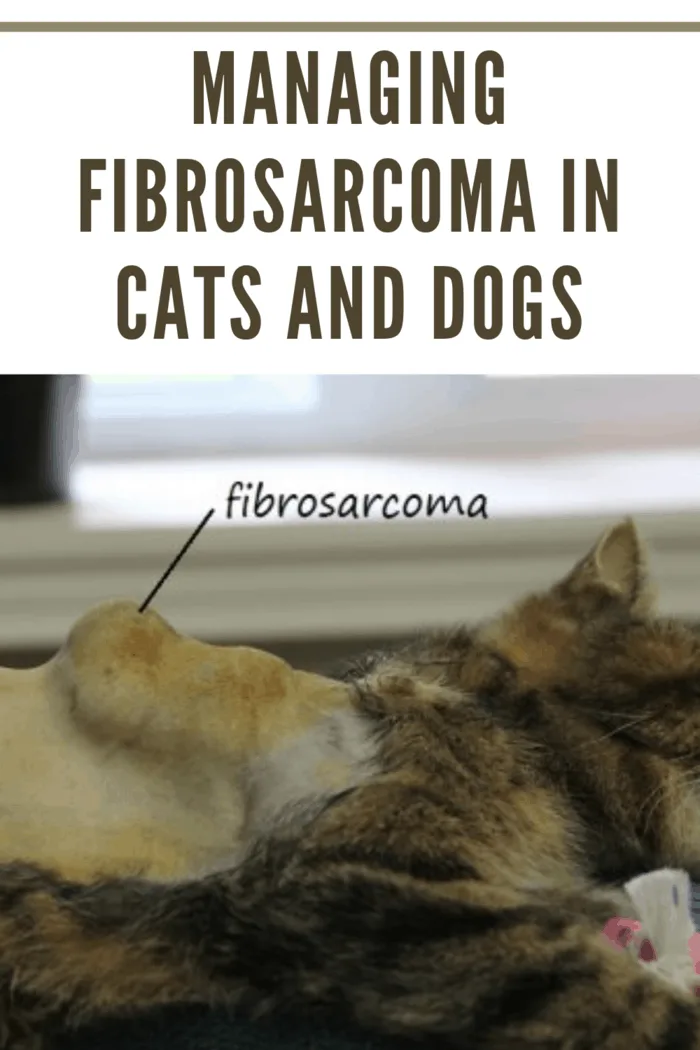Fibrosarcoma: What Is It?
Fibrosarcoma is a type of cancer most commonly located in dogs and cats’ skin and soft tissue. Fibrosarcoma in cats is often found on the shoulder blades, on the neck’s back, and on the chest. Fibrosarcoma is sometimes found in dogs in the mouth, especially the jaw, and in the limbs. In rare cases, though, tumors can be detected in the bones of all animals.
Tumors differ in growth rates between cats and dogs and from breed to breed. The prognosis is based and depends on the location and scale of the tumor and the age and general health of the animal.

Recommended: FeLV/FIV Rapid Test in the dog (zoetisus.com)
Symptoms Of Dogs And Cats With Fibrosarcomas
Pets with fibrosarcomas often have a firm swelling of the skin or dermal region. Skin swelling may or may not be painful and may ulcerate in aggressive cancers. Cats and dogs with oral fibrosarcomas may have bloody oral discharge, trouble chewing, oral discomfort, foul breathing, and excessive drooling. There could also be a history of infection for feline leukemia, other cat illnesses, or rabies virus.
Diagnosing Dogs And Cats With Fibrosarcomas
The diagnosis of vaccine-associated sarcoma requires a biopsy. Additional laboratory testing before surgery can include an FIV and FeLV test, full blood count, blood chemistry profile, and urinalysis to check for internal organ health. X-rays or ultrasounds cannot identify the microscopic spread of the tumor to other organs; however, chest X-rays and abdominal ultrasounds are used to detect cancer’s visible spread.
Treating Dogs And Cats With Fibrosarcomas
These tumors can be tricky as they send out undetectable tentacles, which can’t be seen. Any cells left behind can cause the growth to recur. Unfortunately, this is very common.
• Surgical excision of the lump with a broad margin or amputation of the injured leg.
• Radiation treatment must be followed to kill all remaining cancer cells. This generally starts within two weeks of surgery.
• In some cases, the cat will undergo chemotherapy before surgery to reduce the tumor. It can restart after surgery to destroy any remaining cancer cells. Unlike humans, pets tolerate chemotherapy well and do not cause hair loss.
When a combination of surgery, radiation therapy, and/or chemotherapy has been performed, the overall survival period is 2-3 years.
What Is The Prognosis In Dogs And Cats With Fibrosarcomas?
Fibrosarcoma has a varying prognosis. Small tumors with aggressive chirurgical resection can never recur. Larger cancers, or incompletely resected tumors, will surely recur and become locally aggressive within a couple of months following surgery. However, the long-term prognosis of recovery intervals in the 2-3 year range is considerably increased with a combination of radiation, anesthesia, and chemotherapy.
